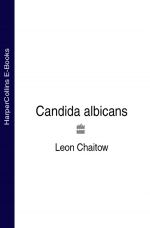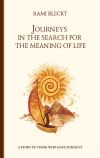Правообладателям!
Представленный фрагмент книги размещен по согласованию с распространителем легального контента ООО "ЛитРес" (не более 20% исходного текста). Если вы считаете, что размещение материала нарушает ваши или чьи-либо права, то сообщите нам об этом.Читателям!
Оплатили, но не знаете что делать дальше?
Текст бизнес-книги "Candida albicans"
Автор книги: Leon Chaitow
Раздел: Жанр неизвестен
Текущая страница: 1 (всего у книги 2 страниц)
Candida Albicans
THE NON-DRUG APPROACH TO THE TREATMENT OF CANDIDA INFECTION
Leon Chaitow

Copyright
Thorsons
An Imprint of HarperCollinsPublishers 1 London Bridge Street,
London SE1 9GF
www.harpercollins.co.uk
First published 1985
Copyright © Leon Chaitow 2003
A catalogue record of this book is available from the British Library
Leon Chaitow asserts the moral right to be identified as the author of this work
All rights reserved under International and Pan-American Copyright Conventions. By payment of the required fees, you have been granted the nonexclusive, nontransferable right to access and read the text of this e-book on-screen. No part of this text may be reproduced, transmitted, downloaded, decompiled, reverse-engineered, or stored in or introduced into any information storage and retrieval system, in any form or by any means, whether electronic or mechanical, now known or hereafter invented, without the express written permission of HarperCollins e-books.
HarperCollinsPublishers has made every reasonable effort to ensure that any picture content and written content in this ebook has been included or removed in accordance with the contractual and technological constraints in operation at the time of publication.
Source ISBN 9780007323784
Ebook Edition © JANUARY 2014 ISBN: 9780007391868
Version: 2015-01-15
Contents
Cover
Title Page
Copyright
1 Candida albicans and common health problems
2 Candida and your defence systems
3 How Candida gets out of hand
4 Candida and its consequences to your health
5 Controlling Candida naturally: supplements, prebiotics, probiotics and herbal extracts
6 The anti-Candida diet
7 Putting your anti-Candida programme together
8 Case histories
Resources
Keep Reading
Other Books By
About the Publisher
1 Candida albicans and common health problems
Since the mid-1980s, it has become clear that an increasing number of common health problems, both physical and mental, might have a common cause – namely, the spread in the body of a yeast that lives in each and every one of us. Its name is Candida albicans, or Candida for short.
Since the first edition of this book (published in 1985), the major emphasis in my practice has involved people with Candida overgrowth as a part – often the major part – of their health problems, which commonly include symptoms of chronic fatigue, irritable bowel syndrome (IBS), allergies and fibromyalgia.
The scale of such problems worldwide has become increasingly apparent as a result of the stream of letters which continually arrives from readers of this book. Many contain phrases such as ‘your book has changed my life’, and often come with heartbreaking stories of desperate health situations which have been positively transformed (although not overnight) by the application of the methods and principles outlined in this book. While receiving such letters is truly humbling, the real credit should go to the pioneers of research into the subject of Candida, such as Dr C. Orian Truss of Alabama, USA, who first noticed what no one else seemed able to see, although it was staring them in the face. Because Candida yeast is present in everyone from the first few months of life, it tends to be overlooked by doctors seeking the causes of complex conditions which commonly involve multiple symptoms, including fatigue, allergies, IBS, ‘brain fog’ and muscle pain. Since this yeast is present in all of us to some extent, it seems that many doctors think that Candida could not possibly be causing the wide range of symptoms that are now linked to yeast overgrowth in so many people. This way of thinking has prevented sympathetic medical attention being given to Candida, except in rare conditions in which it proliferates to the extent of becoming life-threatening – something which happens in people whose defence mechanisms (immune system) has become weakened or deficient because of lifestyle, disease and/or drugs. Chronic Candida overgrowth can result in so many different symptoms that it has been renamed by many practitioners as Candida-related complex (CRC).1
A great many people suffer from a collection of symptoms due to the spread of Candida in their body. Usually, the conditions which are experienced are not severe enough to endanger life, but are certainly sufficient to produce a range of debilitating symptoms.
One of the most interesting summaries of the chronic ill health linked with Candida (particularly fibromyalgia and chronic fatigue syndrome) was presented at a conference on the subject in 1990 by Carol Jessop, MD, a leading physician from San Francisco.2 She had studied the histories of over a thousand patients and discovered some alarming trends which can help us enormously to understand the way some health problems develop.
Among the most common symptoms reported by her patients were: chronic fatigue (100 per cent), cold extremities (100 per cent), impaired memory (100 per cent), frequent urination (95 per cent), depression (94 per cent), sleep disorder (94 per cent) and muscle aches (68 per cent). When patients were examined, among the most common findings reported by Dr Jessop was the presence of yeast infections (87 per cent). Of the 880 patients specifically tested for this, 82 per cent had yeast in their stool samples, and a further 30 per cent had parasites in these samples.
Among the most revealing of all were the findings when Dr Jessop investigated the symptoms experienced before their conditions became chronic: irritable bowel symptoms (89 per cent); recurrent childhood ear, nose and throat infections (89 per cent); ‘constant gas’ or bloating (80 per cent); endometriosis (65 per cent); constipation (58 per cent); heartburn (40 per cent); recurrent sinusitis (40 per cent); and recurrent bronchitis (30 per cent).
Most of the infections (ear, nose, throat, sinus, bronchitis, endometriosis) were almost certainly treated with course after course of antibiotics – the significance of which to the ‘yeast connection’ and digestive distress will become clear in later chapters.
Do you have a Candida problem?
Over the past few years, the following cluster of signs, symptoms and medical history indicators has been described by many practitioners as being present in people with chronic Candida problems.
1 The presence for at least two months of at least two digestive symptoms bad enough to cause you to change your diet or take medication such as:
• constipation and/or diarrhoea
• bloating
• indigestion
• heartburn/reflux
• food sensitivities or allergies.
2 Constant or periodic feelings of profound (‘unnatural’) fatigue, and difficulty in concentrating (‘brain fog’) that is severe enough to affect the way you function.
3 One or more of the following: a sense of hopelessness, anxiety, unnatural irritability, acne, migraine, widespread muscular pain, cystitis, vaginitis, thrush, menstrual problems, premenstrual tension.
4 A history of antibiotic use in excess of two courses in any one year before the development of symptoms (or the use of steroid medication or immune-suppressing drugs for a lengthy period of time (weeks rather than days).
For Candida overgrowth to be considered as the main causative feature of these symptoms, other medical conditions need to be ruled out as causes (although Candida overgrowth may coexist with any of these), such as:
inflammatory bowel disease (colitis, for example)
parasitic infection, such as Giardia
bacterial overgrowth in the intestines
hypothyroidism
hypoadrenalism (Addison’s disease).
Why does yeast spread?
To understand the way in which such a wide range of symptoms could result from the effects of a yeast that lives in all of us, we need to first appreciate those factors which encourage yeast to spread.
In most people, there is an uneasy ‘truce’ or balance between the body and the yeasts that live inside it. Over many thousands of years, a balance has been struck, allowing yeast to live and thrive while presenting no problems to its host, the body, as long as the yeast confines itself to specific areas. Should it grow beyond these sites, the defence capability of the body – represented by the immune system in general and white blood cells in particular – will attack and destroy these overgrowing yeast. The mucous lining of the digestive tract, when it is healthy, provides a physical barrier to prevent the spread of yeast and waste products through it. This mucous membrane also contains and secretes protective substances that can destroy invading yeast.
An added defence comes from the ‘friendly bacteria’ living inside us (mainly in the digestive tract). We give these friendly bugs somewhere to live (as well as food) in return for which they provide us with various services, one of which is control of undesirable visitors, such as yeast. (These defences are covered later in this book, in our search for an understanding of candidiasis.)
At this stage, we should simply recognize that when it is healthy, the body possesses a number of efficient defence capabilities to deal with toxins, undesirable bacteria and yeasts, should any of them intrude into areas where they might cause problems.
But when, due to any of a number of possible causes (discussed later), our defences against Candida is deficient or weakened, the yeast has a chance to spread to areas normally out of bounds. If, at the same time, the foods that the yeast thrives on (such as sugar) happen to be in plentiful supply, an explosion of Candida activity can occur.
This situation – weakened defences and nourishment for Candida – is precisely the combination of factors that has been identified as having become widespread in Western society over the past 25 to 30 years.
The introduction of broad-spectrum antibiotics, the contraceptive pill and the widespread use of steroid medication (such as cortisone) have all played their part in Candida’s spread. In addition, the increased use of sugar and sugar-rich foods has provided the yeast with just the sustenance it loves. This is the unfortunate combination of factors lying at the root of the problem for many people.
A careful look at the nature of the enemy is necessary, together with consideration of those factors and circumstances which allow it to multiply, and what the consequences of such a proliferation might be. This will allow us to consider methods of controlling Candida, the brighter side of our sorry situation, for it seems unlikely that the causative elements of the ‘yeast explosion’ are going to go away. The fact that control is possible in the majority of cases is the good news.
Yeast is not always the cause
It is important to understand that the conditions listed above (such as irritable bowel, bloating, fatigue) are not always the result of Candida infection. However, it is true that all of these can be partly or entirely a result of candidiasis. It is the view of those practitioners now aware of the possibility of Candida’s involvement in common disease problems of this sort that, when a combination of such symptoms appears in a person with no other obvious causes apparent, then Candida should be considered a prime suspect.
Unlike many infections and infestations, it is not easy (but not impossible) to test accurately for the presence of Candida. This is because, as already stated, Candida is present to some extent in all of us, which makes looking for it as pointless as searching for mice in a granary – it is always there. But to what extent, and how much is it involved in producing the symptoms?
Testing for Candida
Candida albicans (and other yeasts) are so common in stool cultures that their presence is often ignored by microbiologists. Medical researchers have highlighted the difficulty of assessing purely from tests whether Candida is active, even when it is known to be in an advanced stage of overgrowth.3 So what tests appear to be the most helpful – as none are perfect – in assessing the presence or absence of yeast overgrowth?
1 Culturing stool samples can be helpful in identifying specific strains of yeast as well as their quantities, but this is not a foolproof method since assessment depends on the particular sample submitted for analysis and, sometimes, people with known Candida overgrowth can produce stools containing relatively low levels of yeast. Faecal culturing has been shown to give 25 per cent false-negative results – that is, people with known yeast overgrowth can wrongly (in one in four negative tests) be assumed to be clear of the organism. And, since everyone has some yeast in the intestines, a positive test does not necessarily tell you that it is the cause of the symptoms being experienced. Nevertheless, these tests can be useful because, when they find high levels of Candida (or other yeasts), they can identify particular strains and also test these to see what medications (drugs and herbs) they are sensitive to. An additional advantage of the stool analysis is that it can identify the presence of parasites and pathogenic bacteria which might be causing or aggravating symptoms.
2 Gut fermentation tests involve a blood sample being taken before and after a sugar dose is taken on an empty stomach. The test assesses the amount of alcohol (ethanol, methanol) produced by yeast in an hour. The amount found in the blood gives an indication of the level of yeast activity.
3 Gut permeability tests show whether there has been a change in the way the lining of the intestines protects the bloodstream from absorbing undesirable substances. This is not a measure of Candida itself because there are many other causes of increased permeability (‘leaky gut’). However, one of the main causes of this is yeast overgrowth.
4 The bloodstream can be assessed for the presence of Candida antibodies. This test has been shown to give some false-negative results (no antibodies noted even though Candida is present). Another problem with this test is that it does not tell you what is happening now because antibodies may be present due to yeast overgrowth activity some time previously.
5 Tests can be done to see whether you are a secretor or non-secretor. We all have a blood type – A, B, AB or O – and most people (about 75–80 per cent) secrete minute amounts of chemical markers of their blood type into their normal secretions (such as saliva or mucus). The 20–25 per cent or so of those who are non-secretors, irrespective of their blood type, are known to have a greater tendency to infections of all sorts, and of yeast in particular. Women with recurrent vulvovaginal candidiasis, for example, are much more likely to be non-secretors. In addition, non-secretors handle sugars less efficiently than secretors, adding to the likelihood of yeast overgrowth.4 A further aspect of this tendency shows that people who have type O blood, particularly if they are non-secretors, are far more likely to develop oral candidiasis.5
6 A person’s health history (such as antibiotic use) and the way their symptoms respond to simple treatment strategies (cutting sugar intake, for example) can be an accurate way of confirming Candida activity as a factor in symptom production. A self-assessment questionnaire (see Chapter 4) provides a dependable guide as to whether or not Candida is currently active. This suggests that the way to prove that a condition (or cluster of conditions occurring together) is the result of Candida is to use a treatment that would reduce yeast activity. If the symptoms then improve markedly, or disappear altogether, such ‘proof’ that yeast was at least part of the cause would be difficult to contest.
Candidiasis is one of the few instances where the treatment of a health problem is, in fact, the main means of diagnosis. The initial suspicion that results in the treatment being started relies upon recognizing the sort of symptoms that suggest the presence of Candida as well as an awareness of those factors that influence its development and behaviour.
A careful background history which looks at previous and current medical treatment and drug usage, as well as diet and stress factors, will give clear signs of the likelihood, or otherwise, of Candida being a possible culprit.
It is these areas that we will explore to formulate a series of recommendations for the control of Candida and for the prevention of its accompanying complications.
Candidiasis is rapidly becoming so widespread as to constitute an epidemic, especially (as we will see), but not entirely, among women. The potentially disastrous health damage caused by the interaction between our bodies and a yeast that is usually easily tolerated and controlled is one of the complications of civilization. The failure, thus far, by all but a handful of doctors to recognize the situation is tragic, as the degree of human suffering involved is enormous. Prevention is not difficult, and control, while a slow process (taking months, not years), is not beyond the limits of any intelligent person.
The major credit for the unravelling of this mystery belongs to one man, who recognized that what he was seeing in his own patients had worldwide importance. Dr C. Orian Truss, of Birmingham, Alabama, will be remembered for his work in this field by hundreds of thousands of grateful people. His masterly investigation and research, conducted in a normal medical practice, show how important simple observation is in the quest for knowledge and the understanding of humanity’s ills. Truss first set about diligently assembling his evidence, which he presented in a scientific journal. He then went back to his task of investigation. Over a period of years, his excellent clinical results in treating an enormous range of diseases – from acne to schizophrenia and what appeared to be multiple sclerosis – were so impressive that the world began to beat a path to his door. Dr Truss has written his own history of this research and of the whole story of Candida in his book The Missing Diagnosis.6
That book, and the excellent book on the same subject by another renowned American practitioner, Dr William Crook, entitled The Yeast Connection, both suggest for their attack on yeast the use of an antifungal drug called nystatin. They also suggest other methods, including nutrition and desensitization. This present book, however, will not attempt to echo such a drug approach, but will present non-drug alternatives to the use of nystatin. This is not to say that nystatin and other antifungal drugs should never be used, only that, in most cases, there are other, apparently safer ways of restoring the competence of the body to fight the yeast itself. There are sound reasons for trying to find anti-Candida alternatives (as will be explained in later chapters), including many naturally occurring nutrients which enhance the control of the wildly proliferating yeast without producing resistant strains, a problem now thought likely when nystatin is used for long periods. This is the only reason this book has needed to be written for, in every other way the two books mentioned on the previous page are excellent and valuable contributions to the literature of health.
We need now to take a closer look at the nature of the enemy, what makes it active and how to recognize such activity. Only then will we begin to learn how to deal with it.
REFERENCES
1 Stretch E. ‘Clinical manifestations of HIV infection in women’, J Naturopath Med 1992; 3(1): 12–19
2 Fibromyalgia Network Newsletters October 1990–January 1992
3 The Lancet 1987; January
4 Chaim W. ‘Association of recurrent vaginal candidiasis and secretory ABO and Lewis phenotype’, J Infect Dis 1997; 176(3): 828–30
5 Burford-Mason A. ‘Oral carriage of Candida albicans, ABO blood group and secretor status in healthy subjects’, J Med Vet Mycol 1988; 26(1): 49–56
6 Truss C. J Orthomolec Psychiatry 1980; 9(4): 287–301
2012 UPDATE
Rapid test: Vaginitis is now one of the most common reason for physician visits, and approximately 30% of all cases are caused by infection with Candida albicans
An accurate, inexpensive, rapid (10 minute), self-testing for vaginal candida can be achieved using a medically validated product called SavvyCheck™. Many pharmacies sell this over-the-counter – or, a websearch (using that brand name) will identify sites that will deliver the test-kit by post. The usefulness of this test is that you can check for progress in reduction of Candida over time.
Правообладателям!
Представленный фрагмент книги размещен по согласованию с распространителем легального контента ООО "ЛитРес" (не более 20% исходного текста). Если вы считаете, что размещение материала нарушает ваши или чьи-либо права, то сообщите нам об этом.Читателям!
Оплатили, но не знаете что делать дальше?






